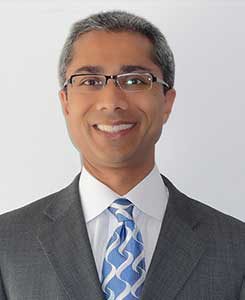
Our investor Q&A series is interesting because we get to speak with individuals across the entire spectrum of real estate investment experience. Today we highlight a conversation with Mahesh Desai — a tenured multifamily investor who manages a private equity group that specializes in the asset class. Below we find out just what ArborCrowd can offer someone who already has a successful apartment portfolio comprised of thousands of units.
Can you tell me about your professional background, and if you have any experience investing in real estate prior to these crowdfunding equity investments?
Well, I am actually a multifamily investor myself. My partners and I have several thousand units in a triad of states — Virginia, Florida and Texas. I’ve mainly used the ArborCrowd platform as a tool to spread my eggs into different baskets. I’m a firm believer in the fact that it’s impossible to know everything about every market. For instance, even though your latest offering Tower on Ryan Park was not in an MSA that I’m currently tracking, the ArborCrowd platform enabled me to comfortably invest there and stay diversified.
How did you initially get involved in multifamily, and what attracted you to the asset class as compared to other sectors and asset classes?
The biggest attraction for me was the steady, predictable, tax-advantaged cash flow. With interest rates as low as they are on a 30-year bond, this is kind of the final frontier for obtaining yield, which is why I think we’ve seen such a huge cap rate compression.
On a global basis, the starvation for yield remains very high. When you look at the alternatives, even at these ridiculously low cap rates, multifamily seems to be more of a reasonably long-term play than other asset classes, and that’s what ultimately drove me to the sector.
Have you heard of crowdfunding or explored other crowdfunding platforms before ArborCrowd?
Yes, I’ve heard of other platforms, I just never decided to invest in them. I felt comfortable with ArborCrowd after having many in-depth conversations with your Investor Relations team. I was very impressed by the sponsorship, underwriting and the platform itself. In addition to that, the first ArborCrowd deal that I invested in — Lago Paradiso – happened to be right in my backyard, here in Miami, so I gave it a whirl. We’ve been partners ever since, and I’m looking forward to broadening my partnership with ArborCrowd.
If someone was thinking about getting started in real estate, what advice would you give to them?
I would give them the same advice that I dole out to myself — have a variety of different investments in a variety of asset classes in a variety of geographies. This diversification is crucial because when a downturn comes, some asset classes and locations will weather the storm better than others. If you’re not overly leveraged, a blended portfolio should help you maintain a reasonable cash flow — which is my main interest here.
What’s nice about the ArborCrowd investments is that some of them will eventually be sold, which could mean repositioning opportunities to take that capital and flip it into the next ArborCrowd deal. This is different than what I typically do since I don’t sell the assets I own. I also feel that it provides me with a little bit of diversification from an investment strategy perspective.
Are there any other asset classes that you’ve thought about getting involved in, or markets you’re keeping track of?
Office is a whole different animal, and I’m not comfortable with how the leasing works in that space. I think that in order to be effective there, you need to have deep pockets and a much bigger amount of capital that you can play with, since vacancies can potentially run very high and for a very long period of time.
The same holds true for shopping centers. I’m a little hesitant about investing in any kind of mall because the retail landscape is changing so quickly. I don’t know much about the medical space, and I’ve stayed away from industrial because it’s typically in remote locations or in locations that aren’t desirable.
Multifamily is the class with the least amount of risk in my opinion. While it may not have the highest returns, you’re protected on the downside, which is why I’ve focused on investing in multifamily over other asset classes.
Multifamily, like any other asset class, moves in cycles. What’s your general take on where we stand in the market?
Let’s make no mistake about where we stand — we’re either at the bottom of the 9th or the top at the 10th. We’re not early on in the game. There’s a lot of heavy lift value-add going on just to get the same returns that you could’ve had from the start a decade ago. It’s a tricky market right now, and you have to be in the right market with the right sponsor and the right value-add story in order to be successful.
